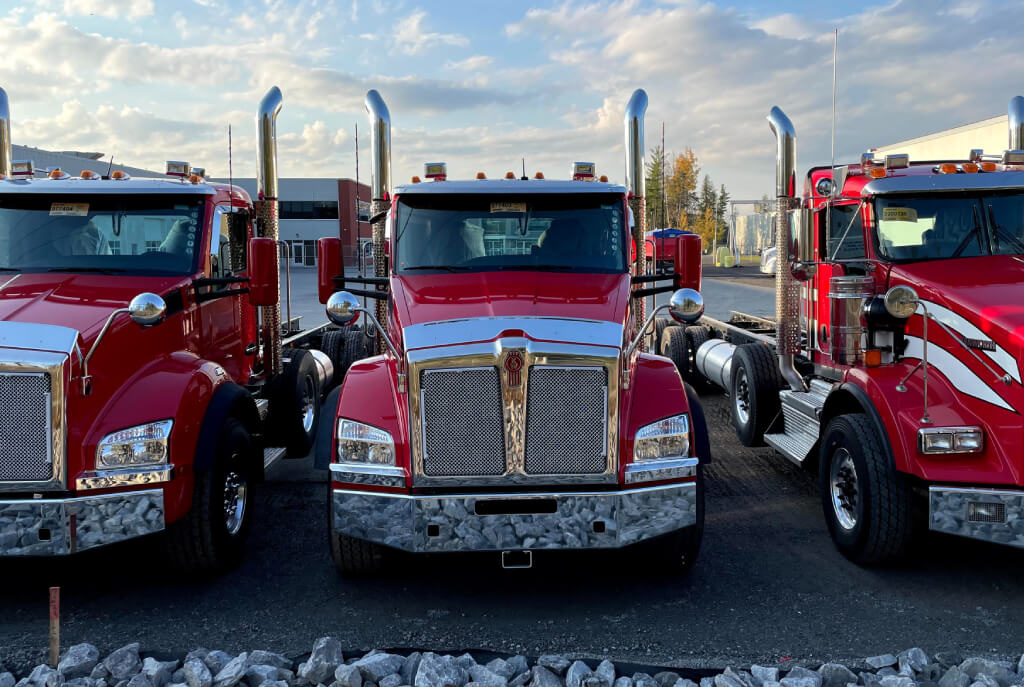How Long Haul Driving Safety Has Been Impacted by COVID
“If you bought it, a truck brought it”
America’s consumer economy is absolutely dependent on the sprawling network of trucking companies and long haul drivers delivering our goods 24/7. Unfortunately, that dependence can be hazardous.
As with many routine processes, the COVID-19 pandemic disrupted the trucking industry in numerous ways. But since the nation relies so heavily on goods and groceries being transported countrywide, the Federal Motor Carrier Safety Administration (under the DOT) scrambled to implement measures to keep drivers safe and wheels on the asphalt.
COVID and the Trucking Industry
Since COVID-19 is a virus, it is transmitted from host to host. When an infected carrier moves around a lot, they spread the virus to new places. The coronavirus pandemic advanced so quickly because infected carriers unintentionally introduced it as they flew in or drove from places where the virus existed to places it previously had not. As they did so, they also infected people they came in contact with along the way.
As you can gather, our complex network of long haul trucks was a ripe opportunity for the virus to spread itself and its variants across the country. Even if drivers are perfectly healthy, studies published by the New England Journal of Medicine note that the virus can live on plastic and stainless steel surfaces “for two to three days” and “remained infectious for up to 24 hours on cardboard.” Meanwhile, the CDC warned that “on non-porous surfaces, viable virus can be detected for days to weeks.”
In other words, if somewhere along the supply chain an infected person left traces of the virus on a box or container that got loaded onto a truck’s shipping container, it’s not impossible for the virus to survive during transport and potentially infect whoever off-loads those goods at the delivery destination.
Protecting Long Haul Drivers During the COVID Pandemic
The other things the trucking industry must avoid are: 1) risking drivers’ health and safety and 2) risking shipping delays due to employee downtime. Long haul truck drivers are on the front lines every day. As the American Trucking Association declared, “In many ways, truckers are the linchpin of our nation’s entire frontline response, providing daily, direct and indispensable support to all essential workers.” But the role puts workers in close contact with people during their long trips from city to city, state to state. From truck stop attendants to dock workers, they are exposed to people who are themselves at high risk of exposure by the nature of their jobs.
The CDC advises long haul trucking employers to protect drivers by enforcing “personal preventive behaviors” i.e. socially distancing, mask-wearing, washing hands frequently, and avoidance of touching one’s face, mouth, eyes, or nose until hands are sanitized. These are, of course, the same general guidelines given to every citizen, but the average citizen doesn’t face as many risks nor have as much potential to introduce and spread the virus to new places.
Workplace Prevention
More specific to the trucking industry are environmental interventions aimed at reducing exposure to the virus or to persons with COVID-19. These include evaluating work areas and standard operating procedures to find and mitigate situations where workers (drivers, dispatchers and maintenance crew members) are in close proximity.
Pre-qualifying truck stops and rest areas along common driving routes is another effective control measure. Things to screen for may include reviewing a site’s adoption and enforcement of safety practices such as disinfection protocols, food handling, and contactless payment systems.
Administrative controls such as workplace safety plans are advised to incorporate best practices such as in-person or virtual health screenings. These can include brief questionnaires or no contact, on-site temperature checks.
Comprehensive cleaning and disinfection protocols are also being implemented. These include making sanitizing disposable wipes more available so drivers can clean frequently touched surfaces like handles, steering wheels, seat belt buckles, and vehicle controls, as well as shared items like pens, clip boards, or device touchscreens. Non-bleach-based sanitizing solutions used for surface disinfection should ideally contain 70% alcohol, with hand sanitizers being at least 60%.
Sick Leave Policies
Additionally, more lenient policies regarding sick leave are encouraged so that symptomatic workers do not feel pressured to work. Historically, showing up to work when sick has been a common problem within the trucking industry because drivers often are pressured to meet delivery deadlines, no matter how they feel. This well-known issue has been a systemic problem with dire consequences in the past. Research has shown that fear of reprisals has, in fact, contributed to an epidemic of stimulant abuse leading to fatigue-related vehicular accidents.
But when it comes to COVID, taking a few pills isn’t going to ward off fatigue. That is why, per CDC, employees who feel under the weather should be allowed to self-isolate/quarantine or call a medical professional to obtain care. Rapid COVID-19 testing is available in most towns, with labs typically paid for by insurance and results often returned within 24 hours.
Per current FMCSA guidelines, property-carrying drivers “can drive up to 11 hours per 14-hour work period, followed by a mandatory 10-hour rest period.” Any long haul driver expected to work up to that many hours a day needs to be healthy and alert, not bogged down by fatigue-causing symptoms or medications.
Safety Training
Another vital administrative control regarding workplace safety is education and training. Drivers must understand the basics of the virus SARS-CoV-2, the COVID-19 disease it causes, the symptoms to watch for, and the importance of being vigilant when taking preventative measures. Drivers should also receive accurate, up-to-date information and guidance in light of changes such as the more highly contagious Delta variant of the coronavirus. This is especially important in light of the prevalence of misinformation propagated on social media and elsewhere.
Employers should also issue all needed Personal Protective Equipment, so that drivers do not share or borrow items from others during their long haul trips. Meanwhile, training can include standard tips such as washing or replacing cloth masks on a regular basis. Proper mask wear is also essential since improper fitting not only increases risk of exposure but can also fog up eyeglasses for drivers who wear them, thus impeding vision.
Safety training materials, including workplace signage, should be clear, conspicuous, and offered in applicable languages if many workers are non-English speakers. It’s also recommended for employers to consider establishing an anonymous safety reporting system (such as a hotline or online form) that workers can use to report concerns or unsafe practices.
Keeping America Safe
Clearly, COVID continues to pose a massive safety problem for the trucking industry. As noted in an article posted by the National Institutes of Health, “An observation of long-distance truck drivers demonstrates that there might be a relationship between highways and the spread of COVID-19.”
One of the last things the industry needs is to turn its network into an effective delivery system for spreading the virus SARS-CoV-2 around the country, which is why preventative measures are crucial. When it comes to COVID, we don’t want that old trucking slogan to become “If you caught it, a truck brought it.”




